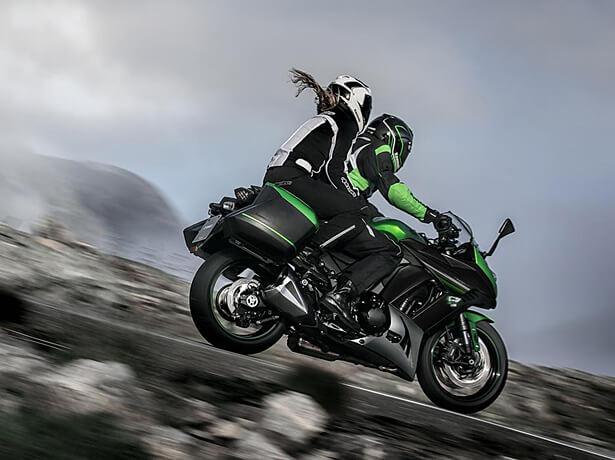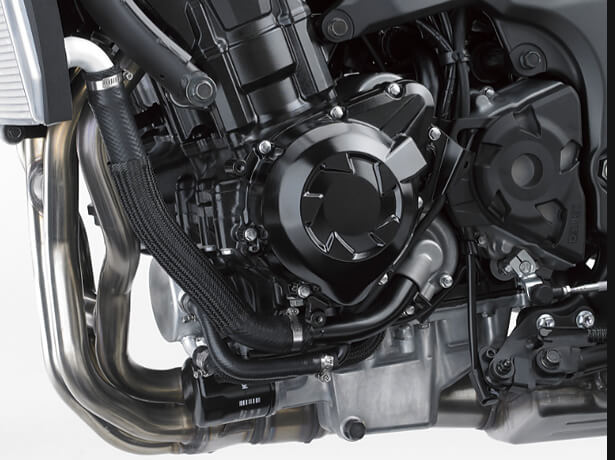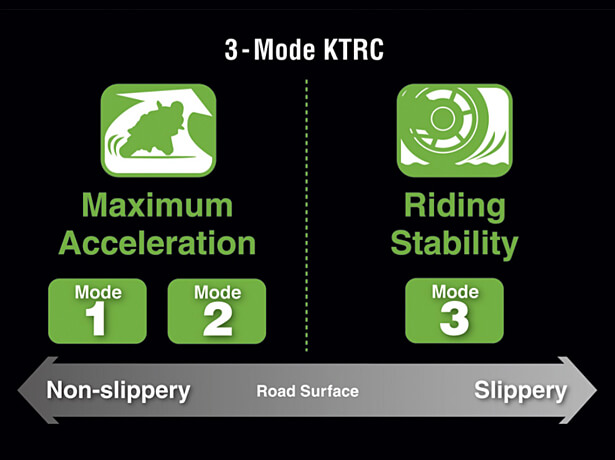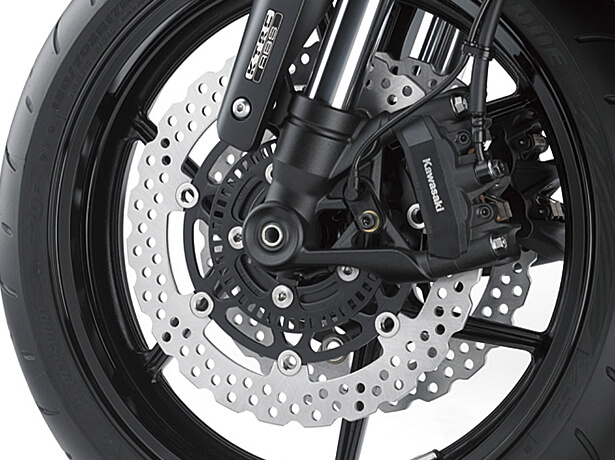Like its predecessor, the new Ninja 1000 offers street riding excitement wrapped in seductive full-fairing styling. Changes to both engine and chassis for more direct response allow riders to feel even more connected to their ride. Like before, the Ninja 1000 blends control and comfort, and the sportier handling does not come at the cost of ride comfort. The well-balanced package further benefits from new, perfectly integrated panniers (accessory) and flagship- level technology like 3-mode KTRC (Kawasaki TRaction Control) and selectable Power Modes, which add to the Ninja 1000’s already highly versatile performance.

Supersport-style full-fairing bodywork gives the Ninja 1000 a distinct, head-turning look. The sleek styling also offers a good measure of wind protection, facilitating short touring runs.The leading edges of the fairings feature a slat-style design that directs the wind around the bike, enabling the fairings to be slimmer in the middle.The fairings flair at the rear, keeping hot air from the engine from hitting the rider’s legs. Slim and compact tail cowl design moves mass both physically and visually away from the rear and toward the front.

Engine tuning focused on the feeling the rider gets when opening the throttle. The strong torque feeling and mid-range hit of the previous model remains, but changes made to the engine and ECU settings result in a more direct throttle response. Liquid-cooled, DOHC, 16-valve 1,043 cm3 In-line Four offers impressive power (104.5 kW (142 PS)) and strong torque.Bore and stroke of 77.0 x 56.0 mm were chosen to achieve the desired engine character. The result is an engine very strong in the everyday rpm range most used in street riding situations.

Complementing its highly versatile performance, the new Ninja 1000 features the same traction control system used on the Ninja ZX-14R flagship. Combining the best elements of Kawasaki’s two traction control systems, S-KTRC and KTRC, three modes cover a wide range of riding conditions, offering either enhanced sport riding performance or the peace of mind to negotiate slippery surfaces with confidence.

The new Ninja 1000 features Tokico monobloc calipers (their first use by Kawasaki). Achieving the new braking characteristics required a redefinition of what Kawasaki’s “ideal” braking was to be. Where the previous model offered very linear brake power application, the brakes on the new Ninja 1000 have a firmer initial touch, followed by a controlled increase in brake force – both are good for sporty riding, but the new braking characteristics better match the more direct feel offered by the Ninja 1000’s quicker handling chassis and more responsive throttle.
| DIMENSIONS | |
|---|---|
| Overall length | |
| Overall width | |
| Overall height | |
| Wheelbase | |
| Road clearance | |
| Seat height | |
| Curb mass | |
| Dry mass | |
| Fuel tank capacity | |
| PERFORMANCE | |
|---|---|
| Max. power | |
| Max. Power with Ram Air | |
| Max. torque | |
| ENGINE | |
|---|---|
| Type / Valve system | |
| Coolant System | |
| Bore x Stroke | |
| Displacement | |
| Compression ratio | |
| Fuel supply | |
| Lubrication system | |
| Starting system | |
| Ignition system | |
| DRIVETRAIN | |
|---|---|
| Driving system | |
| Transmission | |
| Primary reduction ratio | |
| 1st Gear ratios | |
| 2st Gear ratios | |
| 3st Gear ratios | |
| 4st Gear ratios | |
| 5st Gear ratios | |
| 6st Gear ratios | |
| Final reduction ratio | |
| Clutch type (Primary) | |
| FRAME | |
|---|---|
| Type | |
| Front Suspension | |
| Rear Suspension | |
| Front Wheel travel | |
| Rear Wheel travel | |
| Caster (Rake angle) | |
| Trail | |
| Steering angle (left/right) | |
| Front Tyre | |
| Rear Tyre | |
| Front Type Brake | |
| Caliper (Front) | |
| Rear Type Brake | |
| Caliper (Rear) | |